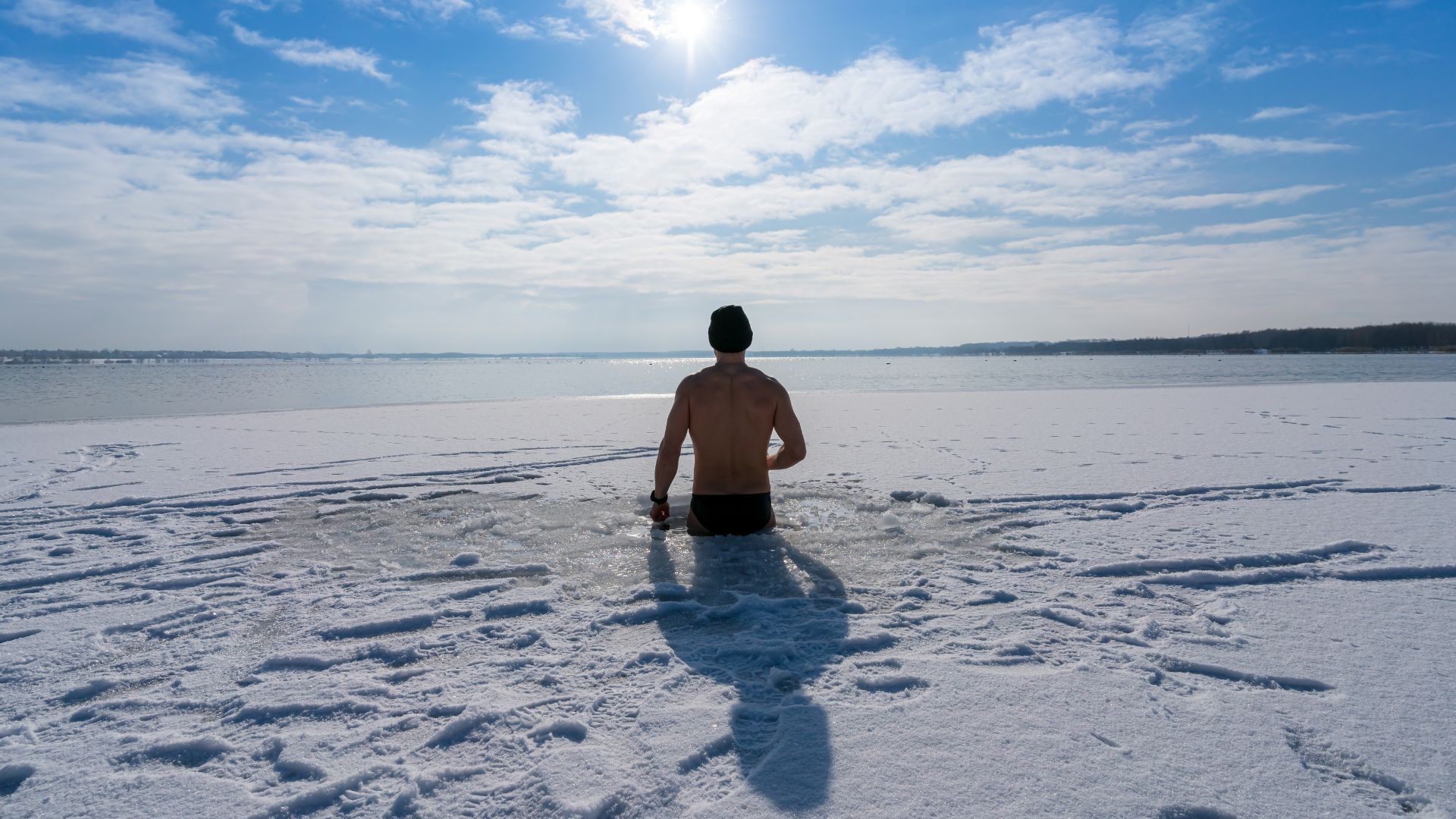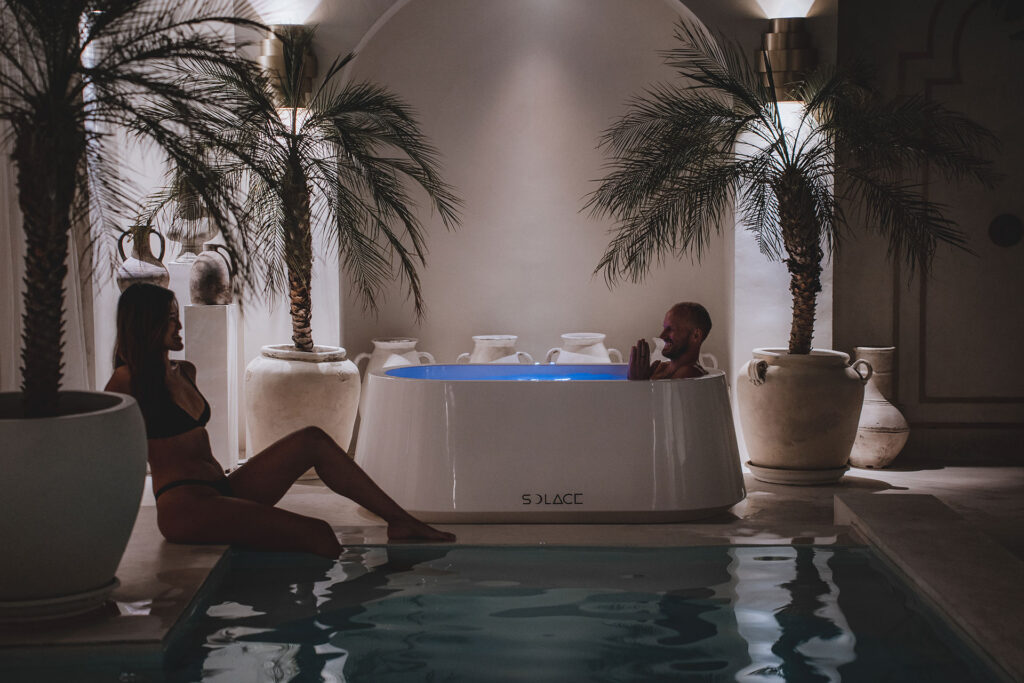Combining an infrared sauna with a cold plunge is rapidly gaining traction among wellness enthusiasts, athletes, and anyone seeking to optimise recovery and mental clarity. This powerful contrast therapy routine—alternating between hot and cold exposure—offers compelling benefits backed by emerging research.
Learn more about the science behind sauna cold plunge routines below, and how Sun Stream Infrared Saunas can take your contrast therapy to a new level.
The science behind contrast therapy
Contrast therapy works by creating a vascular pump effect. The rapid transition from heat of a sauna to the cold of an ice bath causes blood vessels to dilate and constrict dramatically, stimulating circulation and helping flush metabolic waste from tissues. This physiological response triggers several beneficial adaptations:
- Enhanced Recovery: The vascular pump effect reduces muscle soreness and inflammation by improving nutrient delivery and waste removal. Research suggests this can accelerate recovery times after intense training sessions.
- Cardiovascular Benefits: The alternating temperatures provide a workout for your circulatory system, potentially improving heart health and blood vessel function. Regular contrast therapy may enhance cardiovascular resilience over time.
- Neurological Response: The thermal shock activates the sympathetic nervous system, releasing adrenaline and endorphins. This creates an energising effect while simultaneously building stress resilience through controlled exposure to acute stressors.
- Immune Function: Heat exposure may stimulate white blood cell production, whilst cold exposure appears to strengthen immune responses. The combination could provide synergistic immune benefits.
Infrared vs conventional saunas for cold plunge routines
Traditional Finnish saunas heat the air to 70-90°C, creating an intensely hot environment. Infrared saunas operate differently, using far-infrared light to directly heat body tissues at more comfortable air temperatures of 50-60°C.
For contrast therapy, infrared saunas offer distinct advantages. The deeper tissue penetration of infrared heat warms muscles and joints more thoroughly. This enhanced heating effect makes the subsequent cold plunge more impactful, as the greater temperature differential maximises the vascular response.
The gentler air temperature of infrared saunas also makes longer sessions more tolerable, allowing for better preparation before cold exposure. Many users can achieve deeper relaxation and more profuse sweating in infrared saunas, potentially enhancing detoxification benefits.
Optimal Protocol Structure
- Phase 1: Sauna Preparation (15-20 minutes) Begin in the sauna, allowing your core temperature to rise gradually. Focus on relaxation and mindful breathing. Stay hydrated by sipping water throughout the session. The goal is thorough heating without overexertion.
- Phase 2: Cold Plunge (2-4 minutes) Transition immediately to cold water maintained at 10-15°C. Enter gradually if you’re a beginner, but aim for full immersion. Control your breathing with slow, deep inhalations to manage the initial shock response. Focus on remaining calm and present.
- Phase 3: Repeat Cycles Perform 2-3 complete cycles per session. Each repetition amplifies the circulation benefits and builds greater thermal resilience. Most people find the second and third cycles more manageable as the body adapts.
- Phase 4: Recovery (10-15 minutes) Always finish with cold exposure, then rest in a comfortable, temperature-neutral environment. This allows your body to gradually return to baseline whilst maintaining the energising effects of the session.
Sauna / ice bath cold plunges: frequency and progression
- Beginners: Start with 1-2 sessions weekly, using shorter durations (10-12 minutes sauna, 1-2 minutes cold). Focus on building tolerance gradually rather than pushing limits immediately.
- Regular Users: 2-4 sessions weekly provide optimal benefits for most people. This frequency supports recovery without creating excessive physiological stress.
- Athletes: Up to 4 sessions weekly can effectively manage training-induced inflammation and accelerate recovery. However, timing matters—avoid intense contrast therapy immediately before competitions or crucial training sessions.
- Advanced Practitioners: Some experienced users benefit from daily sessions, but doing so requires careful monitoring for signs of overreaching or fatigue.
Safety considerations
Contrast therapy isn’t suitable for everyone. Avoid this practice if you have cardiovascular disease, pregnancy, or uncontrolled blood pressure. The rapid temperature changes create significant physiological stress that could exacerbate certain conditions.
Warning signs to stop immediately include dizziness, chest pain, extreme fatigue, or nausea. Your body’s signals should always override any predetermined protocol.
Proper hydration is crucial throughout the process. Begin hydrating well before your session and continue afterwards. The combination of sweating and cold-induced diuresis can lead to significant fluid loss.
Maximising your sauna cold plunge routine setup
Proximity between the sauna and the cold plunge is essential. Transition time should be under 30 seconds to maintain the thermal contrast effect. If you’re using separate facilities, consider portable ice baths or cold showers as alternatives.
Water temperature monitoring ensures consistency. Invest in a reliable thermometer and maintain your cold plunge between 10-15°C for optimal results. Temperature variations can significantly impact the physiological response.
Integration with training and lifestyle
Timing your contrast therapy sessions can enhance specific goals. Post-workout sessions excel for recovery, whilst morning sessions can energise your entire day. Avoid sessions immediately before sleep, as the stimulating effects may interfere with rest.
Consider your individual response patterns. Some people feel energised for hours after contrast therapy, whilst others experience deep relaxation. Adjust timing based on your personal response and daily schedule.
Take the long-term approach with infrared saunas designed to last
Consistency delivers the greatest benefits from a sauna cold plunge routine. Regular practice builds physiological adaptations that enhance your resilience to various stressors. Many practitioners report improved cold tolerance, better stress management, and enhanced overall wellbeing after several months of consistent practice.
Start conservatively, progress gradually, and listen to your body’s feedback. Contrast therapy should challenge you without overwhelming your recovery capacity. The foundation of effective contrast therapy begins with quality infrared heating—which is why Sun Stream Infrared Saunas, with their superior 360° heat coverage and ultra-low EMF technology, provide the optimal platform for maximising your wellness routine’s impact. Learn more about our leading range of Sun Stream Infrared Saunas and Solace Ice Baths, and build your cold plunge routine with the best names in the business.


